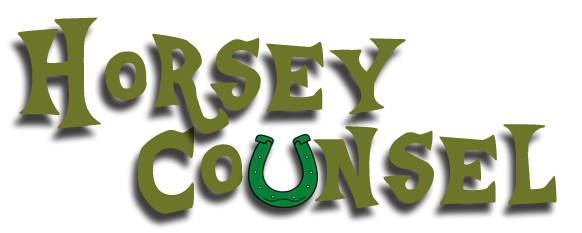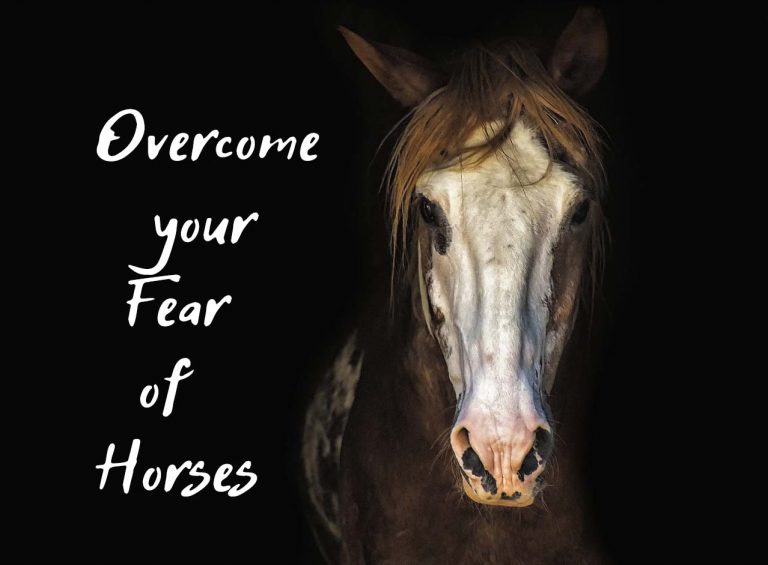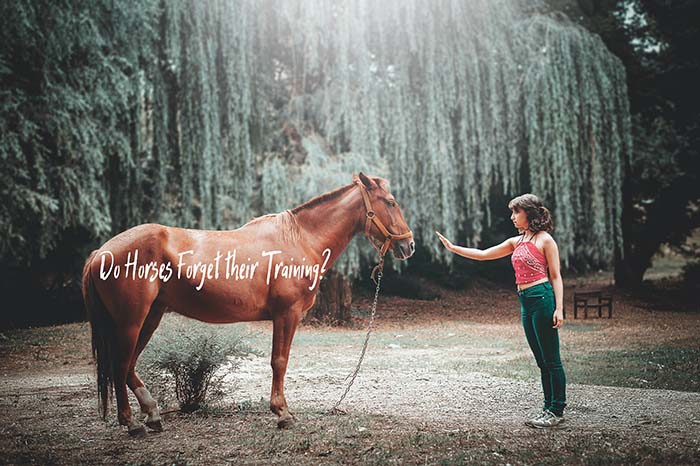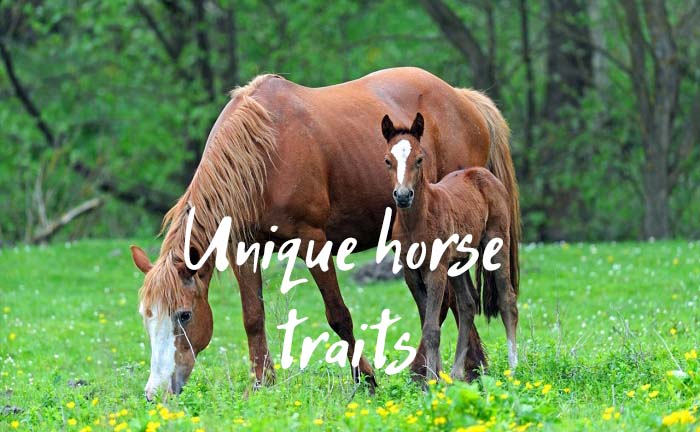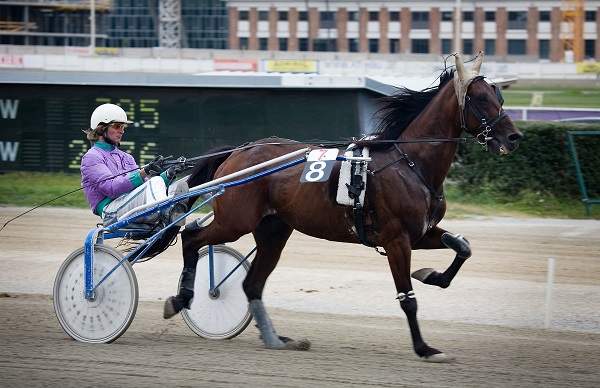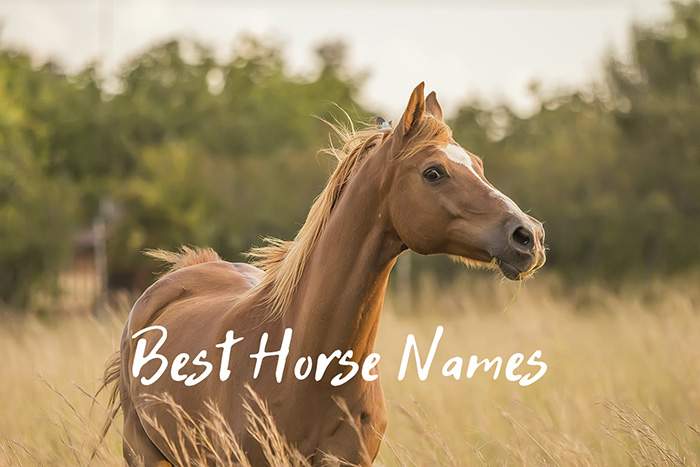How to Ride a Horse Bareback (Without a Saddle)
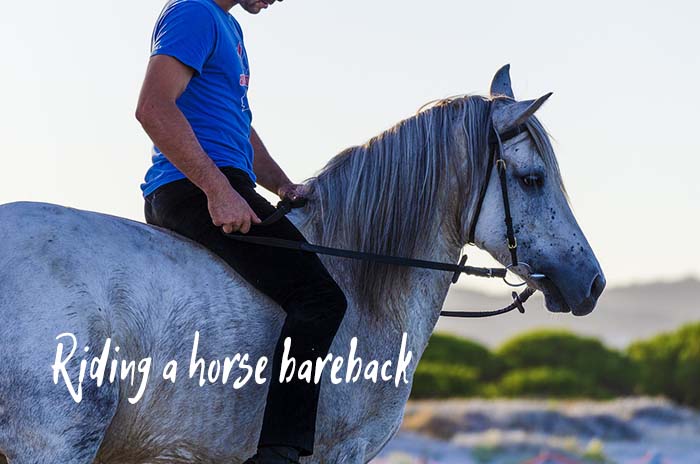
Before the invention of the horse saddle by the Sarmatians in 365 AD, people used to ride their horses bareback. Few people do this nowadays, as using a saddle brings with it a generous advantage set, including improved stability, security, and comfort for both the rider and horse. Still, if you do find yourself in a situation where you have to ride a horse bareback, it’s definitely a good idea to master this technique. Moreover, riding a horse bareback will make you a better horse rider overall, as I’m about to explain further in this article.
How do you ride a horse without a saddle? The first step is removing the saddle, naturally. At a glance, it appears that all you have to do is get on your horse and ride. Things are a bit more complicated than that, as riding a horse bareback requires coordination, great balance, and a good understanding of your horse. Furthermore, you’ll most likely have to develop an individual seat in order to do it properly. Practice makes perfect, though, so the more you do it, the better you’ll become at it.
The biggest challenges you’ll have to overcome while riding a horse without a saddle include independent seat development, core muscle training, and balance training. At first, you’ll struggle with an uneasy feeling that you might fall off at any given point. It’s a real risk, which is why I’ll always recommend beginning at a walking pace.
Is riding bareback uncomfortable for the horse?
There has been some research done on this subject, and the results are quite surprising. You might be inclined to believe that by using a saddle, the rider’s weight is more evenly distributed across the horse’s back. However, results seem to indicate that riding bareback creates fewer pressure points, which would result in less strain on the horse’s back.
In truth, riding bareback should not be uncomfortable for your horse at all. The only exception would be if the horse experiences discomfort at the exact spot where you place your seat bones. If the horse was only ridden with a saddle before, feeling a rider directly on its back might be a little strange at first. Moreover, if you’re not good at maintaining your balance, the horse might feel anxious as you struggle for control.
Other than that, riding bareback should not be uncomfortable for a horse in the slightest.
The advantages of riding without a saddle.
Are there any clear advantages to riding without a saddle? Of course – it enhances the rider’s connection with his horse, and it improves balance. Some trainers even require all of their students to ride bareback at least a couple of times.
Is it a good idea to do it all the time? Probably not, as your horse will become unaccustomed to the saddle, which could create more problems in the end. Riding bareback should be done recreationally, as a tool to improve your skills, and only from time to time. Ideally, your horse should be used to both riding styles.
How to improve your balance and become better at riding horseback.
As I mentioned before, practice makes perfect. Still, there are a few things that you can specifically try to help you become better at riding without a saddle. These tips will improve your balance, and they will help you gain more confidence as a rider.
- Keep your hands to your sides. Since you won’t have any stirrups to rely on, you might be inclined to pull harder on the reins in order to keep your balance. By practicing keeping your hands on your sides, you’ll avoid pulling on the reins and distracting your horse during the riding process. It’s not an easy exercise to do by yourself, though. Instead of doing it alone, ask someone to slowly lunge your horse as you extend your arms out like an airplane. This way, you’ll improve your balance as well as your seat.
- Remove the stirrups from your saddle. If you want to try bareback riding but don’t want to do it until you’re at least a little bit ready, this simple trick will help you get a feeling of it: remove the stirrups from your saddle. Many riders rely on the stirrups for balance, maybe a bit too much in some cases. By removing them, you’ll be forced to rely on your balance and your core muscles to keep you centered. You’ll still be riding in the saddle, but it will be much more difficult than before.
- Close your eyes. This has to be one of the scariest and most difficult exercises to pull off. It also has the potential to be the most rewarding. Closing your eyes while riding without a saddle helps develop your seat. Let me explain: as you ride your horse without a saddle, you develop something called an individual seat. This is your own seating position that moves in tandem with the horse. At different gaits, the horse moves differently, and your seat needs to adapt to keep up. If you don’t have a well-developed seat, you’ll just bounce around on your horse causing distraction and discomfort for both of you. By closing your eyes, you’ll focus more on the feeling of riding, and you’ll develop a seat to go with it. As before, have someone lunge the horse as you ride bareback with your eyes closed. This will usually yield the best results.
- Perform transitions and turns. Turns and transitions are the best balancing exercises you can do while riding horseback. Because they are so challenging for your balance, they will help you develop it even further. I’d recommend practicing these movements at a walking pace at first, and then moving on to the trot as you become more and more comfortable.
Is it a good idea to use a riding pad?
Some horse riders might recommend using a riding pad instead of a saddle. A riding pad represents the middle ground between riding bareback and riding on a saddle. As its name suggests, this product is basically a cushioned pad that goes across the horse’s back and straps up under its belly.
While generally improving comfort, the pad is not comparable to a saddle when it comes to security and feel. You’ll still need good balance and strong muscles to ride on a riding pad. Keep in mind that if it’s not strapped properly, it might slip off and cause an accident. Make sure to strap the pad properly and do a few practicing runs before going on a longer ride.
Staying on your horse while bareback riding – the basics.
Your biggest problem while riding without a saddle will be to stay on your horse in a dignified manner. Here’s what you can do to make the experience easier for both you and your horse:
- Put weight on your heels. It’s not easy, I know, but you need to focus on keeping your weight in your heels as you ride bareback. You might already be familiar with this technique if you’ve been riding in a saddle, but this time around, you have no stirrups for support. Keeping your weight in your heels improves your center of balance, and it helps you achieve a better seat. It also prevents you from gripping the horse’s sides too tightly.
- Maintain a relaxed position. Even though you’ll need to move in the same rhythm as your horse, you’ll still need to maintain a relaxed position as you do so. Becoming too stiff might cause you to jerk the reins and bounce on the horse’s back as you try to keep your balance. Keep an eye out on your body movement as you ride. If you feel that you’re becoming too stiff, focus on relaxing your posture a bit. It’s a difficult thing to pull off, as riding without a saddle actively engages your core muscles.
- Don’t compromise your riding position. No matter if you ride with a saddle or bareback, you still need to maintain a correct posture. Fight the urge to pitch your body forward in order to feel more secure. Also, try not to swing your legs forward. Instead, sit up straight, pull your shoulders back, and keep your legs under your hips.
- Follow the horse’s rhythm. I’ve touched on this before, but it is incredibly important so I’ll detail it once more. While riding bareback, you need to move your seat in the same rhythm as your horse. Basically, the lower part of your body needs to become “one with the horse.” It needs to move in unison. By moving your seat in the same rhythm, you’ll not only maintain your balance and posture better, but you’ll also reassure your horse. Your ride will become smoother overall, and your confidence will improve as you master this technique.
- Start with small steps. Don’t rush into complicated techniques or high speed riding as you learn the basics. Advance at your own pace by practicing at a walk. Perform some circling, as well as some transitions from walking to a full stop. Rushing things could cause bad experiences for both you and your horse. Riding bareback requires practice and commitment. Nobody will expect you to master it on your first try.
Summing up.
Riding without a saddle is challenging, but it does come with its own set of rewards. For once, it helps you become a better rider, and it allows you to improve your relationship with your horse. While not particularly necessary in today’s day and age, riding bareback is still practiced with great success in many parts of the western world.
If you would like to share your own experiences on the subject, or if you have anything that you’d like to add to this article, don’t hesitate to get in touch!
